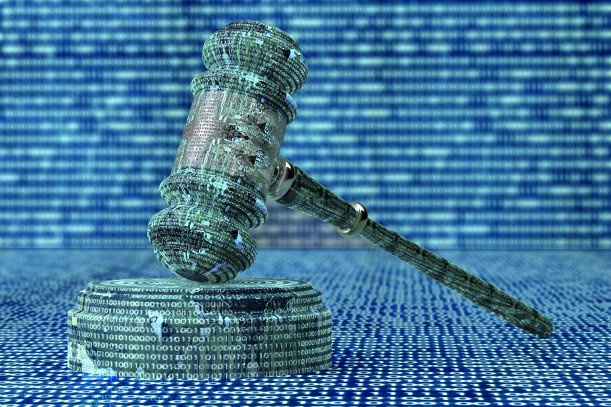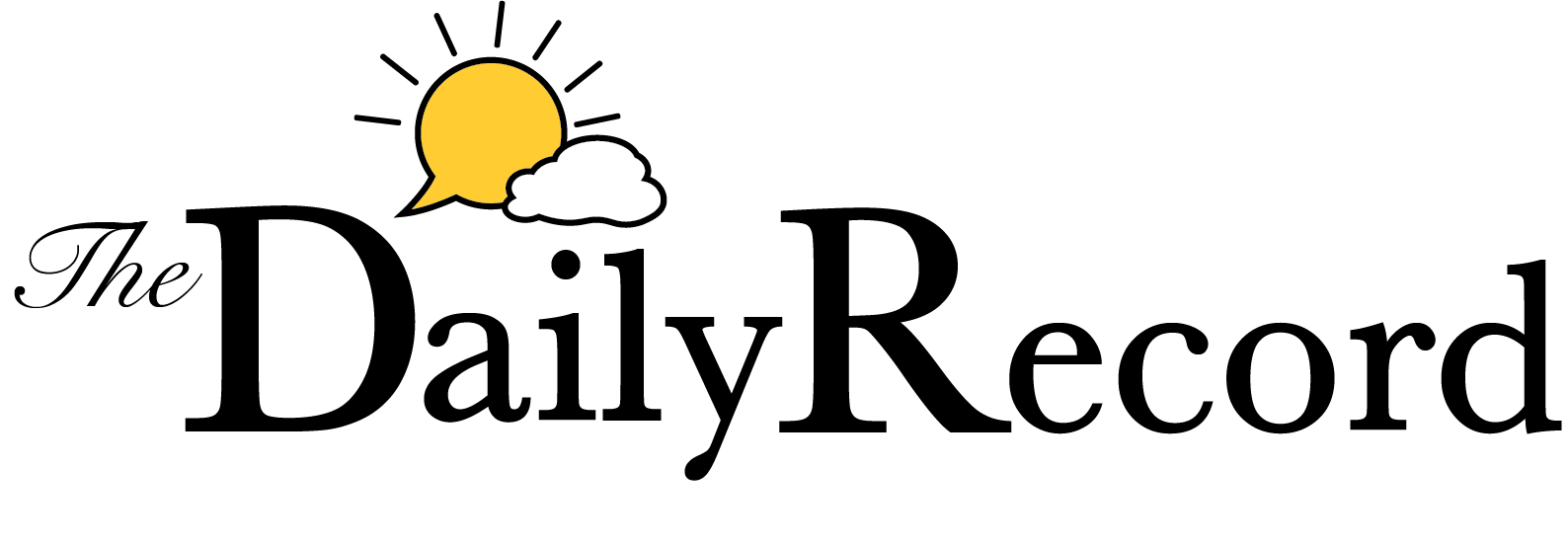Ethics, Technology, And Innovation In Law Practice

Many law firms are transitioning to newer, innovative methods of legal technology. The ethics of technology are important to implementing a paperless transition. (Shutterstock)
The use of technology is growing in the legal industry and continues to vary dramatically from lawyer to lawyer and law firm to law firm. At a recent conference that I attended, I was part of a conversation in which the participants were discussing the significant differences in use of technology and how to advance the profession in general. The suggestion was made that one of the failures in really bringing technology to the legal industry relates to the need to bring technology to attorneys in the same way we would bring complex legal solutions to our clients. A great lawyer can make the complex seem simple and meet the client where the client is. The legal industry would be well served if those seeking to encourage lawyers to use more technology would meet lawyers where they are. This article will address some of the basics of ethics and the use of legal technology and then seek to cover foundational technology in more advanced uses of technology.
Ethics of Technology
The following paragraphs are not intended to be a comprehensive coverage of the current state of ethics and legal technology. Instead, the content is designed to simply ensure that the reader has an awareness of the ethical rules that apply when considering legal technology.
Rule 1.1 of the ABA Model Rules of Professional Conduct provides that lawyers must provide competent representation to a client. Comment 8 to Rule 1.1 provides: “To maintain the requisite knowledge and skill, a lawyer should keep abreast of changes in the law and its practice, including the benefits and risks associated with relevant technology [emphasis added], engage in continuing study and education and comply with all continuing legal education requirements to which the lawyer is subject.” Most states, including Nebraska, have adopted Rule 1.1.
The issue as to this rule is exactly what is meant by competent and relevant technology. From a very basic perspective, this is generally considered to include having a professional email address, being aware of social media sites, and the ethical risks associated with using them, understanding the use of the cloud and how such use impacts the security of client information, being aware of the risks associated with mobile devices, understanding or data security and implementing security measures, and keeping up with a discovery and filing practices.
The duty regarding technological competence under Rule 1.1 may vary by practice area. For example, family law firms have begun to use software for calculating child support. For attorneys working in such area, the rule likely requires a familiarity with the software being commonly used in the practice area. A litigator handling document intensive cases should likely be familiar with and consider using electronic discovery. A transactional lawyer should be following the trends in artificial intelligence for document review.
It is likely that lawyers will need to consider how the duty established in Rule 1.1 will interplay with some of the other Rules of Professional Conduct. For example, Rule 1.4 addresses communications with clients. Rule 1.6 addresses confidentiality of information. Rule 5.1 provides that partners, managers, and supervisory lawyers are required to take reasonable efforts to ensure that all lawyers in the firm comply with the Rules of Professional Conduct. Rule 5.3 extends the responsibility for compliance to non-lawyer assistants.
Rule 1.4 was originally written long before we lived in an era of smartphones, laptops, and remote work. When mobile telephones became common, various ethics committees debated whether a lawyer could even use a mobile phone for a conversation with the client. With modern technology, a lawyer should consider confidentiality along with communication. A lawyer should also consider the ability to readily document the communication in the client file.
Rule 1.6 provides that a lawyer shall maintain confidentiality of information. “A lawyer shall make reasonable efforts to prevent the inadvertent or unauthorized disclosure of ... information relating to representation of a client.” The duty of confidentiality extends to maintaining security of client information. That is, technology must be used securely.
The Pandemic, Ethical Rules, and the Rapid Evolution of the Use of Legal Technology
When the pandemic began, there were many lawyers who were used to personally working remotely but then had their entire office go remote. Many found that having the entire office removed was a different challenge than working from home or remotely on one’s own. The transition to being entirely remote resulted in challenges both from a technology perspective and from an ethical perspective.
Two of the ethical rules implicated are Rule 5.1 and Rule 5.3. Rule 5.1 requires that a partner in a law firm make rea sonable efforts to ensure that all lawyers in the firm conform to the rules of professional conduct. Rule 5.3 requires that any partner or lawyer with supervisory authority in a law firm must ensure that reasonable efforts are being made to ensure that any supervised employees are complying with the ethical rules.
As the world went remote when the pandemic started, firms that were still using paper and receiving significant communications by mail discovered the challenges of dealing with paper. Attorneys used to having associates, paralegals, and administrative support readily available in person found the challenges of managing personnel to be more complex. Several states issued ethical opinions in relation to remote work. One of the early opinions was Pennsylvania Bar Opinion 2020-300, which provided the following guidance on the ethical issues of remote work:
All communications, including telephone calls, text messages, email, and video conferencing must be conducted in a manner that minimizes the risk of inadvertent disclosure of confidential information (note that this does not say “eliminate” but “minimize”);
Information transmitted through the internet must be done in a manner that ensures the confidentiality of client communications and other sensitive data (note that this does not say “guarantee’ but rather “ensures”);
Remote workspaces must be designed to prevent the disclosure of confidential information in both paper and electronic form;
Proper procedures must be used to secure, and backup confidential data stored on electronic devices and in the cloud (what does “proper procedures” entail? Consider how what is proper will differ based on circumstances and change as technology advances and costs of procedures that may be prohibitive today become reasonable tomorrow);
Staff working remotely must be educated about and have the resources to make their work com pliant with the Rules of Professional Conduct (what can practitioners do to corroborate what efforts to educate have been made?); and
Appropriate forms of data security must be used.
Using The Pandemic Issues to Drive Technology Going Forward
Technically, to work remotely, you simply need a computer. Law firm employees using personal devices creates fodder for inefficiency and a playground for various violations of the ethical rules. For example, is your firm allowing the use of personal devices that are also used by other family members of home?
Consider requiring that all personal devices used remotely be provided by the law firm. Rather than having desktops in the office, consider using docking stations and laptops. Using a laptop and docking station avoids the need for a desktop at the office, a possible desktop at home, and a laptop to travel with. This approach can ultimately reduce costs as well as enhance efficiency and reduce issues with the various ethical rules. Ultimately, while compliance with ethical rules is very important, most attorneys are seeking to provide quality service to clients. By minimizing risk, enhancing efficiency, and employing excellence in the use of technology, better client service and more satisfied clients will result.
In taking various attorneys paperless over the years, it has been common to hear the reasons why one attorney’s practice is unique and incapable of becoming paperless. Any practice can become paperless. Sometimes, it is a matter of designing the system to go paperless. This is a great example of where the system needs to meet the needs of the lawyer. I recently consulted with a law firm that had gone paperless except for the transaction department. In the process of consulting with the firm, I learned that the paperless systems have been designed primarily for litigators and had not considered the different needs for transactional attorneys.
Wherever you are on the paperless journey, it is important to consider where you are and make sure that the process of becoming entirely paperless moves forward in steps that makes sense to each practice area of the firm. In addition to considering practice areas, a system should be designed in a way that considers how different minds search and save. If a system accommodates and considers attorneys who began practice with typewriters as well as attorneys who grew up in the inter net era, the system will work.
Evaluate all areas of the practice where paper is still being used. Do you have a high volume of the incoming mail? Consider how you can encourage clients to upload documents to a portal rather than having them send anything by mail. Instead of paying someone to open mail, consider having a client service coordinator to assist clients and how to provide documents to the firm electronically.
A well-designed document management structure will facilitate the ability of a law firm to be successfully paperless. For the lawyer who is still using paper files, create a system that is sufficiently similar to the paper file system so that a transition will be easy. For the lawyer who has never seen a paper file, the system must be designed to address the different ways that lawyers will search for documents. Use standardized naming, filing, and document conventions for everything that is saved. Provide training. When training is provided, consider doing so in short weekly huddles. Asking lawyers to take two days out of their busy schedules typically doesn’t work well. After two days of training, lawyers are inundated with emails and go back to doing what they were doing before. Instead, make brief trainings a constant.
If your law firm continues to use servers, consider the cloud. A cloud-based system allows secure and simple access from almost anywhere. Updates occur automatically as a part of the cloud-based service. A hybrid approach to the cloud can be used in some instances.
Cybersecurity should be taken seriously. For most law firms, a cyberattack is an issue of “when” not “if” Keep cybersecurity policies up to date. Have a specific person designated to monitor security issues frequently. Engage in regular cyber-security educational efforts. Cybersecurity should not be limited to what was used last year. Law firms should have an inventory of all hardware, software, and user permissions. While it might be tempting to keep copies of files for former clients available, such files should be archived – the last thing you want to do is be forced to notify a former client of a cyber breach.
Using a document prepared for a previous client to create a document for another client should simply no longer be a practice. Even if you don’t have a document automation system, you can create a form from the old client document rather readily and use that rather than the previous document. Document automation allows lawyers to be more independent, accurate, and efficient. Editor’s Note: Visit nebar.com for more information on NebDocs, which provides document assembly and legal templates.
Subscription services exist for may practice areas. Alternatively, there are numerous document automation services. Artificial intelligence is evolving rapidly. There are currently products that can review documents a lawyer previously created and create a form.
Process automation can facilitate practice even more than document automation. Any process that is predictable and repeatable can readily be automated. To identify what processes should be automated, consider the steps you take in a particular project. By way of example, I handle a significant amount of trust administrations. I have an automated process that dockets all trust administration deadlines based on the date of death. The same process allows review of all trust administrations by deadline, by attorney, or any other category established.
Online payments have become a client expectation. There are many options available to law firms. Most cloud-based practice management systems provide an integrated solution.
Online legal services are also becoming an expectation. The Omaha-based service at https://mamabearlegalforms.com/ was pointed out to me when I was at a meeting in Austin, Texas. Creating an online intake form that integrates with your document automation or practice management system eliminates time and errors and allows clients to provide information to you at any time that is convenient for them.
Whenever I hear someone say, ‘We are doing this with Process X because we have always done it that way,” I know it is time to re-evaluate the process. We typically create a diverse group to brainstorm how we can do something differently.
The House of Delegates of the American Bar Association adopted Resolution 115 in 2019 encouraging innovation in the legal industry. While some states are actively resisting change, others are adopting rules allowing non-lawyer ownership of law firms and alternative providers. In 2020, Arizona eliminated the rule limiting non-lawyer ownership. Utah created a pilot program allowing certain non-lawyer owned entities. California has passed a rule permitting greater fee sharing with certain non-profit organizations. As the industry changes, technology and innovation are approaches that make it possible to remain competitive.
Mary Vandenack is the founding and managing member of Vandenack Weaver Truhlsen in Omaha, Nebraska. Mary practices in the areas of tax, estate planning, asset protection planning, business succession planning, tax dispute resolution, and tax-exempt entities. Mary is a regular speaker and writer in her substantive areas of practice as well as on the advancement of technology in the legal profession. Mary recently served as Editor-in-Chief of ABA Law Practice Magazine and has been inducted into College of Law Practice Management, Women of Legal Tech and received the James I. Keane award for technology in law practice. This article was republished from the Nebraska Lawyer, the official publication of the Nebraska State Bar Association.
Category:
User login
Omaha Daily Record
The Daily Record
222 South 72nd Street, Suite 302
Omaha, Nebraska
68114
United States
Tele (402) 345-1303
Fax (402) 345-2351




